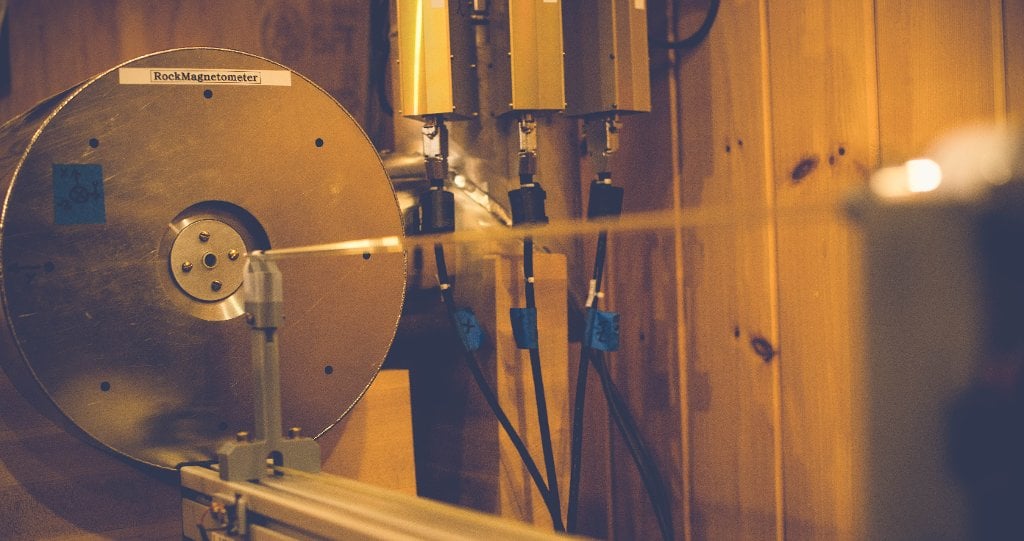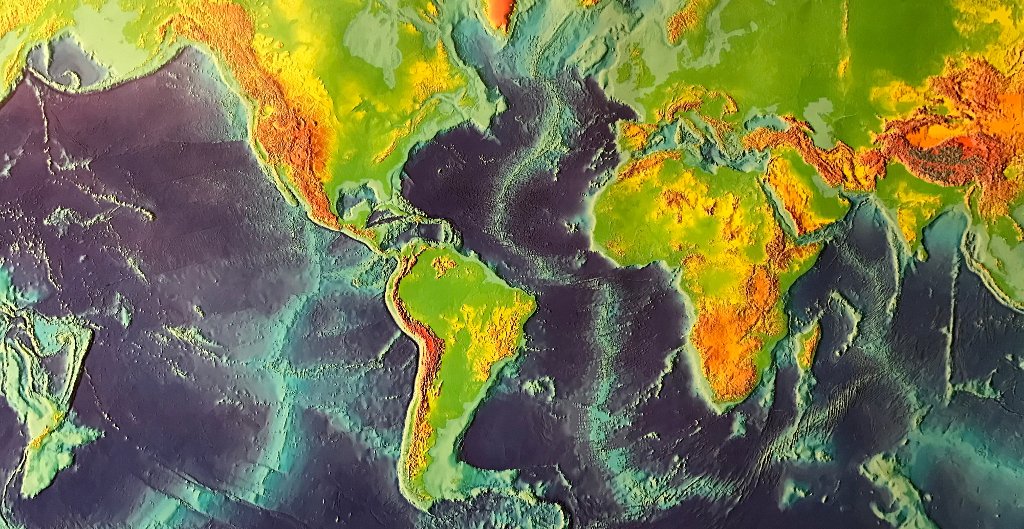Gleaning data from old rocks may result in bias. Now, geophysicists have a way to improve their methods to overcome challenges in studying the history of the Earth's core and magnetic field that make up the geodynamo.
Since researchers cannot visit the core, they use rocks at the surface as a proxy. Specifically, volcanic rocks record the intensity and changes in Earth's magnetic field and the record extends back billions of years to the early days of the planet's young core and the development of the geodynamo. The problem is that most data extracted from these old rocks can be biased.
In a new study published in Science Advances (DOI: 10.1126/sciadv.1602306) and led by geophysicists from Michigan Technological University, the research team lays out how bias is introduced and what to do about it.
The Right Rock
The first challenge is finding a rock that actually preserves the earth's magnetic field. Basalts work well because they are not only full of iron titanium oxides, but they cool quickly with small crystals and are abundant around the world and throughout geologic time. However, a rock's age can be a hurdle.
"It's crazy to think about just how old these rocks are, " says Katie Bristol, one of the study co-authors and geophysics undergraduate at Michigan Tech; some Precambrian samples the team analyzed were around four billion years old. "Even if we do find the right rocks, they've been around for so long that they've gone through alterations—they may have been remagnetized."
While challenging, age and alteration aren't the biggest source of bias in studying the geodynamo.
Models and Field Data Don't Agree
Start with the Jurassic—a time of terrible lizards, high carbon dioxide levels and frequent magnetic pole flipping. The rock record shows that with more flips, the intensity of the magnetic field waned. It's an inverse relationship that geodynamo models predict; however, it has been difficult to back up with data from field samples, which to date have not shown a correlation between magnetic reversals and past magnetic fields' strength, or paleointensity.
The discrepancy has been debated but remained unresolved, says Aleksey Smirnov, an associate professor of geophysics at Michigan Tech and lead author of the study. The bias, introduced by the conventional Thellier method for analyzing rock sample magnetism, produces lower than expected paleointensity strengths and may resolve this controversy.
"Previous data may need to be reconsidered," Smirnov says, adding that in the new study, his team tested systemic bias on synthetic samples first. "See, when you work with natural rocks, it's difficult to separate the effects of nonideal grains and alterations."
In theory, the Thellier method requires very small magnetic grains that should plot as a line during analysis; however, because most rocks contain much larger nonideal grains, the plots are warped. This problem has been known but largely ignored, says Smirnov, instead researchers tend to only use a section of the curved plot to best estimate the linear relationship. This consistently produces lower than expected measurements and systemic bias in paleointensity datasets, Smirnov says.

An Improved Method
The key to gathering better data, he suggests, is using low-temperature demagnetization along with the Thellier method. The additional steps are immersing the sample in liquid nitrogen in a magnetic field-free environment, then letting it naturally warm back up to room temperature before following through with magnetometer measurements. The procedure stabilizes the sample. Another option is to calculate the bias introduced by grain size. Unfortunately, because most datasets don't include grain size for each sample, older data will need to be re-analyzed.
"This is a more rigorous way of doing this particular science," Smirnov says. "I've been doing this a long time—and if we want good data, we need to use good methods."
The paper co-authors include Bristol, Smirnov's graduate student Marine Foucher and alumnus Evgeniy Kulakov, now at the Centre for Earth Evolution and Dynamics at the University of Oslo.
Michigan Technological University is an R1 public research university founded in 1885 in Houghton, and is home to nearly 7,500 students from more than 60 countries around the world. Consistently ranked among the best universities in the country for return on investment, Michigan's flagship technological university offers more than 120 undergraduate and graduate degree programs in science and technology, engineering, computing, forestry, business, health professions, humanities, mathematics, social sciences, and the arts. The rural campus is situated just miles from Lake Superior in Michigan's Upper Peninsula, offering year-round opportunities for outdoor adventure.






Comments